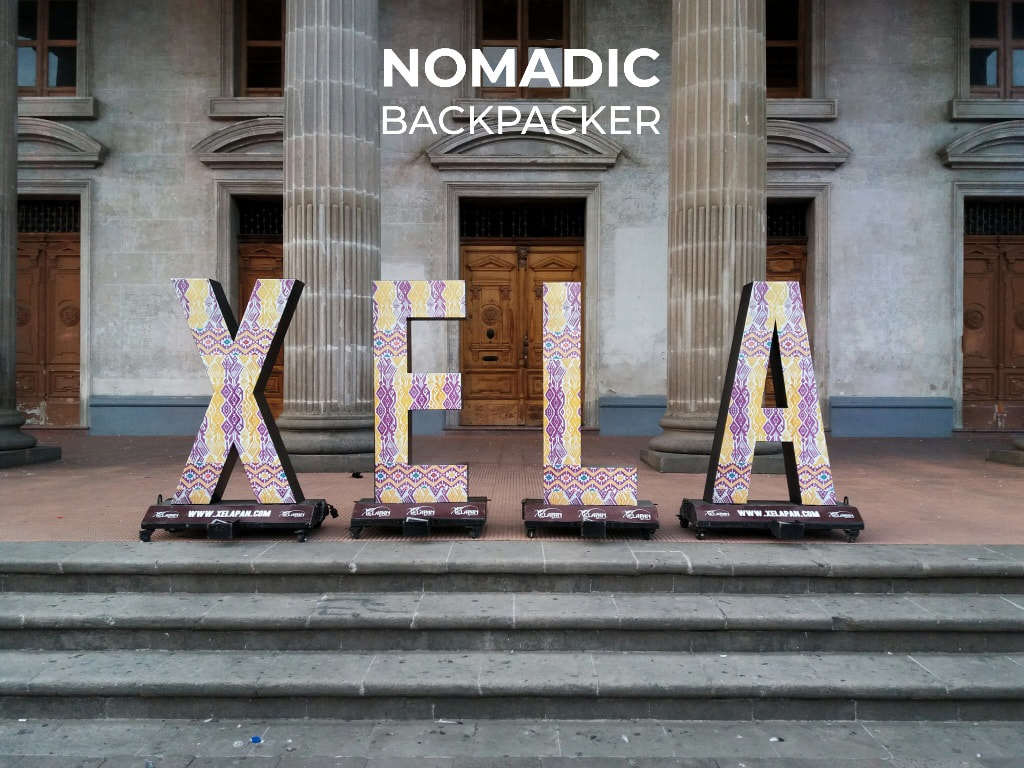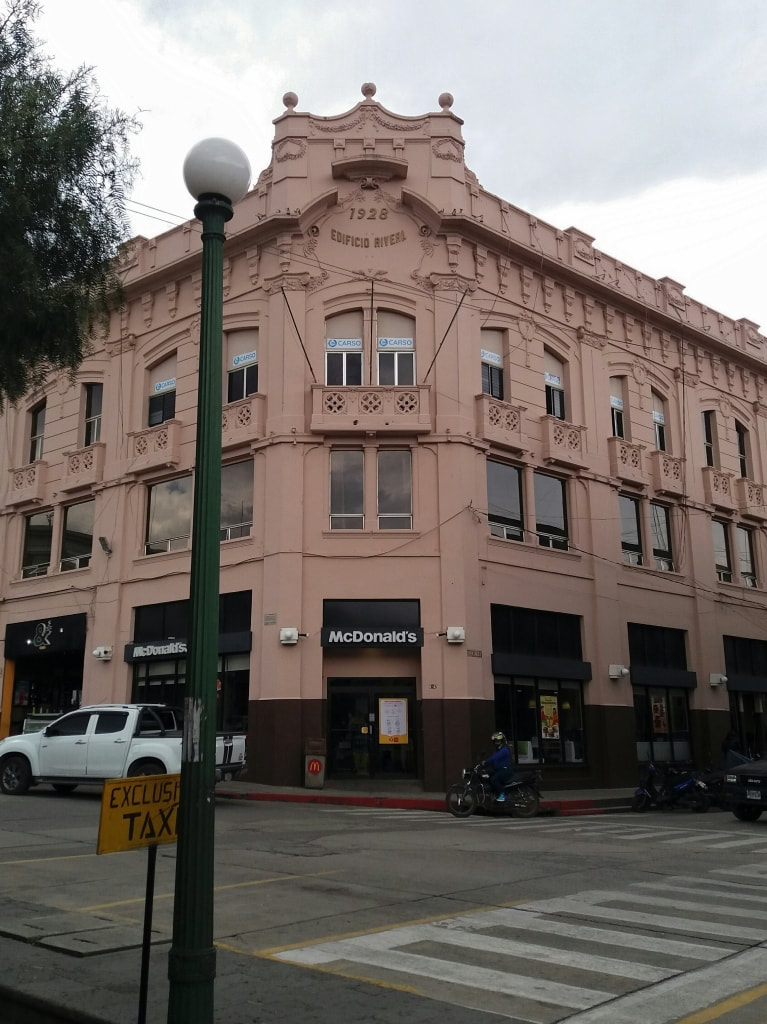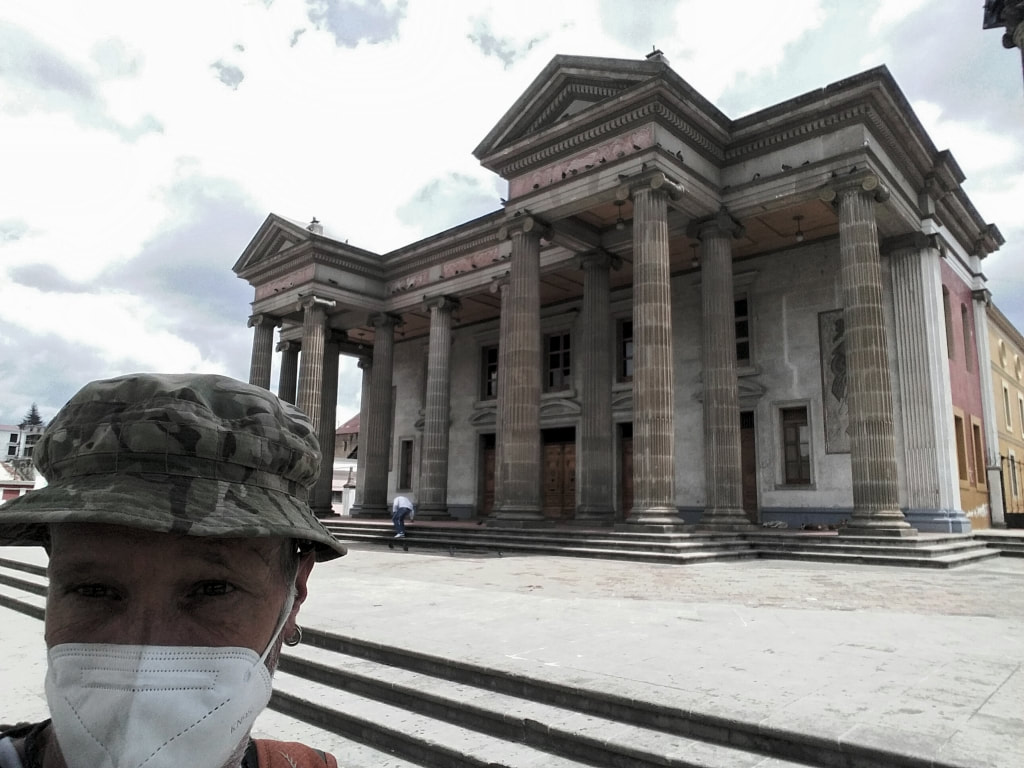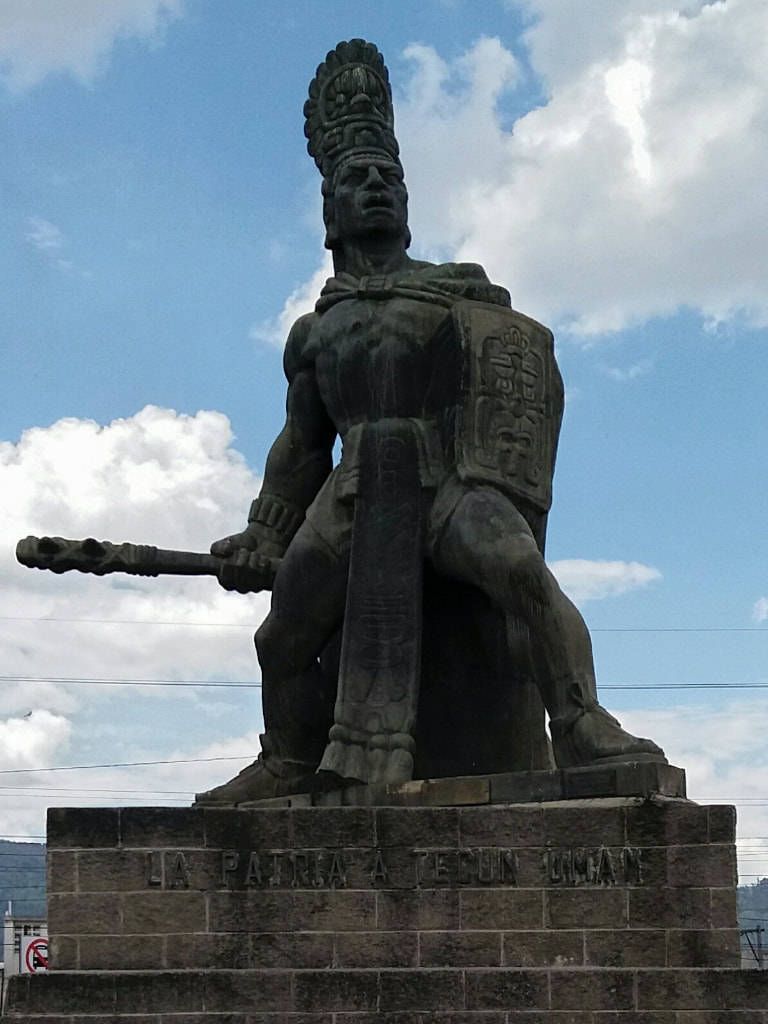Backpacking in Guatemala: Quetzaltenango
May 31 2021 | Tagged: Guatemala
Quetzaltenango, 2nd biggest city in Guatemala always referred to by its Mayan name of Xela, pronounced 'shella'.
At 2330m asl and 14deg north of the equator, the climate is cool but don't be fooled. The sun is very strong! In winter it gets cold. Not just a bit chilly. Cold.
Xela, my first stop in Guatemala. In the end, I spent around 10 weeks in this great backpacking country and produced nearly 30 blog posts, all of which you can find on my Backpacking in Guatemala Index page
Xela, my first stop in Guatemala. In the end, I spent around 10 weeks in this great backpacking country and produced nearly 30 blog posts, all of which you can find on my Backpacking in Guatemala Index page
I travelled by a much longer route than most people from the Mexican town of San Cristobal de las Cases. I took a night bus to Tapachula and then crossed at the Ciudad Hidalgo/Tecun Uman border crossing and then a minivan to Coatepeque and finally a chicken bus to Quetzaltenango.
But if you prefer to have less hassle, book your shuttle with GuateGo, who have very competitive rates.
First impressions always mean a lot to me and Xela got the thumbs up!
I based myself at the Hotel Ideal in Zona 1, 10 minutes walk from the Parque Centro América. I booked 2 nights and just extended.
I based myself at the Hotel Ideal in Zona 1, 10 minutes walk from the Parque Centro América. I booked 2 nights and just extended.
It's getting into the rainy season here. Typically it rains in the afternoon and evening. So I adopted a schedule where I'd get up at around 7 am and cook up a hearty breakfast using local produce from the mercado.
Then I'd walk the streets. Some days, I'd set off with a particular destination in mind. But mostly I just wandered. Rainy afternoons were given to keeping this travel blog, Nomadic Backpacker running.
I backpacked Quetzaltenango over the course of a week. Here are my findings:
The Parque Centro América was a cool place to come and sit and admire the rather awesome architecture. At the northern end is the Banco Industrial:
Then I'd walk the streets. Some days, I'd set off with a particular destination in mind. But mostly I just wandered. Rainy afternoons were given to keeping this travel blog, Nomadic Backpacker running.
I backpacked Quetzaltenango over the course of a week. Here are my findings:
The Parque Centro América was a cool place to come and sit and admire the rather awesome architecture. At the northern end is the Banco Industrial:
Then you have the McDonald's in a rather grand building:
The Municipalidad de Quetzaltenango/City Hall, dating from the late 1880s:
And the Quetzaltenango Cathedral:
The original Espiritu Santo church, now a cathedral was the 2nd church built in Guatemala, in 1532.
The baroque-style colonial facade that remains today, was not part of the original structure, this was added in the 17th Century. Next to it was a convent.
The convent and church were demolished at the end of the 19th Century. Only the facade and the bell tower and the Virgin del Rosario chapel were left standing. The neo-classical structure of the present day cathedral was designed by Alberto Porta and built in the 1900s.
The baroque-style colonial facade that remains today, was not part of the original structure, this was added in the 17th Century. Next to it was a convent.
The convent and church were demolished at the end of the 19th Century. Only the facade and the bell tower and the Virgin del Rosario chapel were left standing. The neo-classical structure of the present day cathedral was designed by Alberto Porta and built in the 1900s.
Then at the end of the Parque Centro América you have the Casa de la Cultura aka the Museo de Historia Natural:
One of the many Xelapan Cafés across the city with yummi pastries:
And the Pasaje Enriquez:
Pasaje Enriquez was the first shopping mall in Quetzaltenango built by Juan Enriquez in the late 1890s under the direction of the Italian architect Alberto Porta.
Now it seems home to just 3 bars, the Salon Tecun, the El Pasaje and the one I drank a beer in, Dos Tejanos purely for the sake of this blog post:
Now it seems home to just 3 bars, the Salon Tecun, the El Pasaje and the one I drank a beer in, Dos Tejanos purely for the sake of this blog post:
And the park itself:
Not far away are a couple of quirky bridges. The Puente de los Chocoyos:
And the Puente de Piedra:
I was lucky to see The Municipal Theatre with the Letras de Xela ouside. On subsequent walks down the 1a Calla Cajola they weren't there:
3KM north of the Parque Centro América is a statue of Tecun Uman. Tecun Uman was supposedly one of the last rulers of the K'iche' Maya people. Despite the lack of concrete evidence that he even existed, he was declared as a National Hero of Guatemala in 1960. The town that I crossed to from Mexico is named after him:
And towards the Minerva bus station is the rather bizarre El Tinajón:
Walking through the Minerva market, a great place to pick up your fruit and veg, you'll see the Minerva Temple. It just looks so out of place. The first Greek style temple was built in Guatemala City in 1901 and then replicas were built across Guatemala:
Iglesia San Nicolás built in 1899 with its Neoclassical design:
On the other side of the city is the Monumento a la Marimba. The marimba is a musical instrument, similar to the xylophone. The monument was created in 1978 by Rodolfo Galeotti. To honour the women in his home town he added a sculpture of a Quetzaltecan woman in regional dress.
And lastly, as I backpacked Quetzaltenango, I visited the Museo del Ferrocarril de Los Altos, the Los Altos Railway Museum. Los Altos was one of the states of the Federal Republic of Central America. Quetzaltenango was the state's capital from 1838 to 1840.
In 1930, the Ferrocarril de Los Altos, the only electrical railway in Guatemala came into operation. The line ran from San Felipe to the city of Quetzaltenango, a distance of 38KMs. The line was destroyed by heavy rains in 1933 and was sadly never restored. Here are some photos of the B&W photos in the museum and a few exhibits:
In 1930, the Ferrocarril de Los Altos, the only electrical railway in Guatemala came into operation. The line ran from San Felipe to the city of Quetzaltenango, a distance of 38KMs. The line was destroyed by heavy rains in 1933 and was sadly never restored. Here are some photos of the B&W photos in the museum and a few exhibits:
There are no affiliate links on this blog post. I write posts to provide detailed information. I can not do that without name-dropping.



































